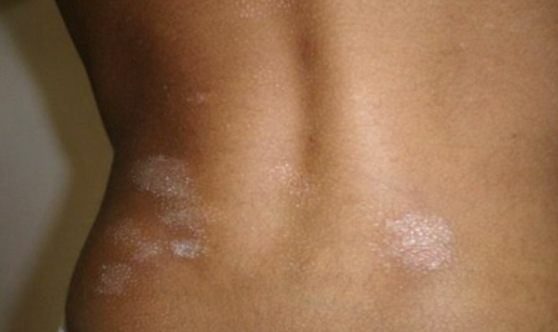Lichen spinulosus is a disorder characterized by the presence of small, follicular, keratotic papules of skin color that coalesce to form plaques. ICD-10 Code: L73.8
This condition typically occurs in childhood and adolescence, more commonly in boys, and rarely in adults, with the average age of patients being 16 years.
Etiology and pathogenesis are not well understood. It is thought to have an autosomal dominant inheritance pattern and is associated with atopy and infections. There have been reports of typical lichen spinulosus eruptions in HIV-associated follicular syndrome. Other (probably coincidental) associations described in the literature include seborrheic dermatitis, drug reactions (e.g., omeprazole), Hodgkin's disease, Crohn's disease, syphilis, and ID reaction to fungal infections.In most cases, the disease appears suddenly and develops over several weeks. There are usually no subjective symptoms, although in rare cases there may be mild pruritus.
Typical lesions consist of small (1-2 mm in diameter), skin-colored, follicular papules with a keratinized scale on the apex that resembles "spikes" rising above the surrounding skin. These papules cluster into round or irregularly shaped plaques 2-6 cm in diameter. Preferred sites for eruptions include the neck, shoulders, buttocks, chest, abdomen, extensor surfaces of the upper limbs, and knees. Face, hands, and feet are rarely involved. Mild erythema around the lesions is sometimes observed.
The eruptions may resolve spontaneously over several months or years.- Phrynoderma
- Ichthyosis follicularis
- Keratosis pilaris
- Juvenile pityriasis rubra pilaris
- HIV-associated follicular syndrome, associated with trichodysplasia spinulosa.
- Follicular mucinosis
- Lichenoid tuberculosis
- Similar eruptions have been reported in patients treated with BRAF inhibitors and systemic lithium therapy.

